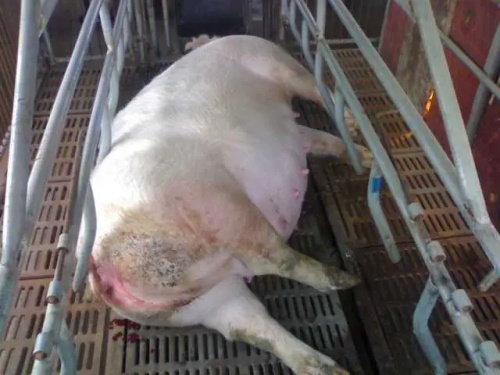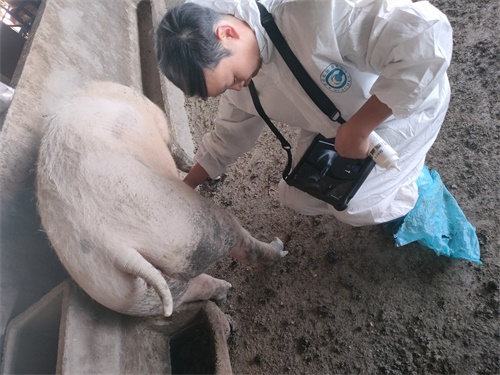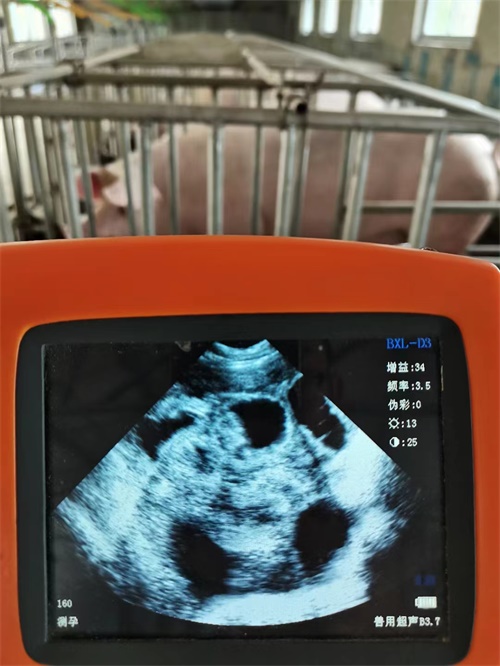In modern pig farming, maximizing sow productivity and ensuring the health of nursing piglets are crucial for economic viability and sustainability. Among the many technologies that have revolutionized swine management, veterinary ultrasound stands out as a vital tool that significantly improves reproductive performance and piglet care. This non-invasive imaging technique offers real-time insights into sow reproductive status and piglet development, enabling farmers to make informed decisions throughout the production cycle.

Globally, pig producers increasingly rely on veterinary ultrasound to optimize breeding efficiency, detect pregnancy early, manage lactation effectively, and monitor piglet digestive health. This article explores how veterinary ultrasound contributes to enhancing sow productivity and the management of lactating piglets, drawing on both Chinese farming experiences and international practices.
Veterinary Ultrasound in Increasing Sow Productivity
Objectives of Sow Management
The primary goal of managing breeding sows is to ensure they produce a large number of healthy piglets annually and to maximize weaning survival rates. This creates a solid base for the growth of fattening pigs and ensures profitability in pork production. The reproductive cycle of a sow typically includes a sequence of events: farrowing, lactation, weaning, течка (heat) period, mating, беременность, and then farrowing again.
Each stage in this cycle demands precise management supported by veterinary ultrasound technology to optimize outcomes. While farrowing, weaning, and breeding are short-term processes, their success depends heavily on the underlying long-term phases of lactation, weaning-to-estrus interval (anestrus), and gestation.
Early Pregnancy Diagnosis and Reproductive Monitoring
One of the most critical applications of veterinary ultrasound is early pregnancy diagnosis, typically performed 21 Кому 30 days post-mating. Early confirmation of pregnancy allows farmers to identify non-pregnant sows promptly and make timely decisions to re-breed or cull, thereby improving herd reproductive efficiency.
Internationally, early pregnancy scanning with veterinary ultrasound has become standard practice in commercial pig farms. Например, in countries such as Denmark, the United States, and Spain—leaders in pork production—routine ultrasound checks help reduce non-productive days and increase sow lifetime productivity. This proactive approach contrasts with smaller or less developed farms, where pregnancy is often confirmed only by physical signs or at farrowing, resulting in wasted time and resources.

Monitoring Sow Body Condition for Optimal Breeding
Post-weaning, the sow’s body condition critically influences the success of subsequent breeding. Veterinary ultrasound is employed to measure backfat thickness, a key indicator of body reserves and nutritional status. Appropriate backfat levels ensure sows have enough energy for successful ovulation and pregnancy maintenance.
Studies from European and North American farms demonstrate that ultrasound-guided backfat measurement enables precision feeding strategies tailored to individual sows. This personalized approach reduces the risk of under- or over-conditioning, which can impair fertility or cause metabolic disorders.
Managing Reproductive Disorders
Veterinary ultrasound also assists in diagnosing reproductive disorders such as ovarian cysts, uterine infections, or irregular estrus cycles. Detecting these conditions early allows veterinarians and farmers to intervene with treatments that restore reproductive function and minimize losses.
Internationally, ultrasound diagnosis of reproductive abnormalities is a standard veterinary service, contributing significantly to improved sow longevity and herd stability.
Veterinary Ultrasound Applications in Lactating Piglet Management
Importance of Piglet Digestive System Development
The lactation phase is vital for piglet survival and growth. Early nutrition impacts gastrointestinal development, immune system function, and later adaptation to solid feed. Veterinary ultrasound provides an innovative means to monitor piglet digestive tract development and detect abnormalities non-invasively.
In leading swine-producing countries, veterinary ultrasound is increasingly used to assess the integrity and function of piglet digestive organs during lactation. This approach supports precise feeding programs that enhance gut health and reduce post-weaning growth check.
Solid Feed Introduction and Digestive Gland Monitoring
Supplemental feeding of piglets typically begins around day seven after birth to stimulate digestive tract development and encourage adaptation to weaning diets. Veterinary ultrasound allows direct visualization of digestive glands such as the pancreas and salivary glands, ensuring they develop properly to produce sufficient digestive enzymes.
Feeding practices involving small, frequent meals of specialized creep feed are recommended internationally to minimize digestive stress. Ultrasound monitoring helps verify the effectiveness of these feeding strategies and guides adjustments to feed type and quantity.
Water Supply and Piglet Hydration
Adequate water intake is essential for piglet digestion and overall health. Ветеринарное УЗИ studies have influenced the design and placement of drinking nipples to optimize water access for young piglets. For instance, maintaining nipple height around 12 cm from the floor and angling them downward at 45 degrees facilitates ease of drinking.
By ensuring sufficient clean water intake, farmers support better feed consumption and digestive enzyme production, critical factors for piglet growth and weaning success.
Early Detection of Digestive Disorders
Veterinary ultrasound also serves as a diagnostic tool to detect digestive tract abnormalities such as intestinal blockages, fluid accumulation, or inflammation in piglets. Early identification enables timely intervention with medical or nutritional management, reducing mortality and morbidity rates.
International veterinary protocols recommend periodic ultrasound screening in high-health-status herds, particularly during critical weaning periods, to maintain piglet health and productivity.

Integrating Veterinary Ultrasound into Comprehensive Swine Management
Combining Ultrasound with Other Technologies
While veterinary ultrasound is invaluable, its greatest impact comes when integrated with other reproductive and nutritional technologies. Например, combining ultrasound pregnancy diagnosis with electronic sow feeding (ESF) systems allows tailored feeding regimens that optimize body condition and litter performance.
In developed countries, data from ultrasound scans are often integrated into farm management software, enabling real-time decision-making and precise record-keeping. This holistic approach improves sow herd performance and piglet growth rates.
Training and Adoption Challenges
Despite its proven benefits, widespread adoption of veterinary ultrasound remains uneven, especially among small and medium-scale farms in developing regions. Challenges include the cost of equipment, availability of trained technicians, and farmer awareness.
International development programs and extension services emphasize training farmers and veterinarians in ultrasound use. Workshops, on-farm demonstrations, and e-learning platforms have proven effective in accelerating adoption.
Economic Benefits
Economic analyses in countries like the United States and Germany show that investing in veterinary ultrasound technology leads to substantial returns by reducing non-productive days, improving litter size and piglet survival, and lowering treatment costs for reproductive disorders.
Farmers report that ultrasound-assisted management enhances overall herd profitability and sustainability, making it an indispensable tool in modern swine production.
Заключение
Veterinary ultrasound plays a pivotal role in advancing sow productivity and managing lactating piglets. By enabling early pregnancy diagnosis, monitoring sow body condition, detecting reproductive disorders, and assessing piglet digestive health, ultrasound technology empowers producers to optimize their operations scientifically.
International experiences and research underscore the effectiveness of veterinary ultrasound as a non-invasive, real-time diagnostic and management tool. As global pig production faces increasing demands for efficiency and animal welfare, the integration of veterinary ultrasound into routine farm practices will continue to expand.
For pig producers aiming to improve sow reproductive performance and ensure healthy, well-nourished piglets, embracing veterinary ultrasound technology is not merely advantageous but essential for future success.
References
-
Kirkwood, R. N., & McKeith, F. K. (2014). Reproductive Management in Swine. В Swine Nutrition (pp. 239-262). CRC Press.
-
Mullan, B. P., & Main, R. G. (2006). Weaner Pig Nutrition. Australian Pork Limited.
-
European Commission. (2017). Best Practices in Pig Farming: Reproduction and Management. Directorate-General for Agriculture and Rural Development.
-
Wilson, M. E., & Cole, D. J. (2019). Ultrasound in Swine Reproduction: Current Practices and Future Directions. Journal of Swine Health and Production, 27(4), 195-202.